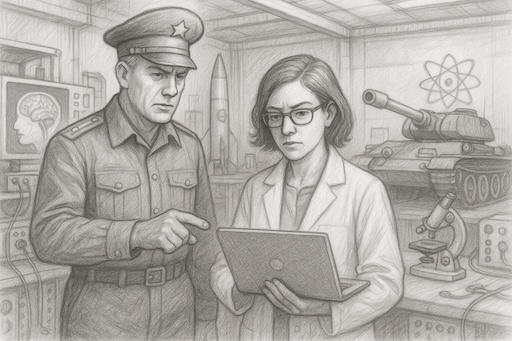For much of the twentieth century, major technological breakthroughs were tightly interwoven with military needs. Take the internet, for example. In the late 1960, the U.S. Department of Defense launched ARPANET through its Advanced Research Projects Agency (ARPA). The first successful message was sent in 1969 between computers at UCLA and Stanford. Designed to create a resilient communication network during the Cold War, ARPANET eventually evolved into today’s global internet.
The semiconductor revolution followed a similar pattern. The transistor was invented in 1947 at Bell Labs, but it was during the 1950s and 60s—especially with the space race and rising Cold War tensions—that military funding poured into semiconductor research. The U.S. government was a major early customer for integrated circuits, using them in the Minuteman missile program and the Apollo spacecraft. This demand drove rapid development, eventually making chips cheap enough for civilian products.
Military investment didn’t just seed these technologies—it shaped the trajectory of computing itself. In many ways, the modern digital world grew out of military needs and priorities.
Yet, in recent years, a strikingly different story has emerged.
The rise of Large Language Models (LLMs), like OpenAI’s GPT series, Google’s Gemini, and Meta’s LLaMA, marks a break from this pattern. These models didn’t begin in defense labs or government-sponsored projects. GPT-1 was released by OpenAI in 2018, built using publicly available datasets and trained on commercial cloud infrastructure. What’s more, the field has grown through open collaboration, open-source releases, and shared academic research—not military contracts or classified initiatives.
This shift—from top-down military-driven innovation to bottom-up civilian-led development—raises important questions. What happens when cutting-edge technology is no longer shaped by national defense, but by global communities, commercial incentives, and open collaboration? With LLMs, we’re seeing not just new tools, but a new model for how those tools come into being.
It’s a reminder that the future of innovation might not come from secret labs or classified projects—but from open code, shared data, and the imaginations of people around the world.


